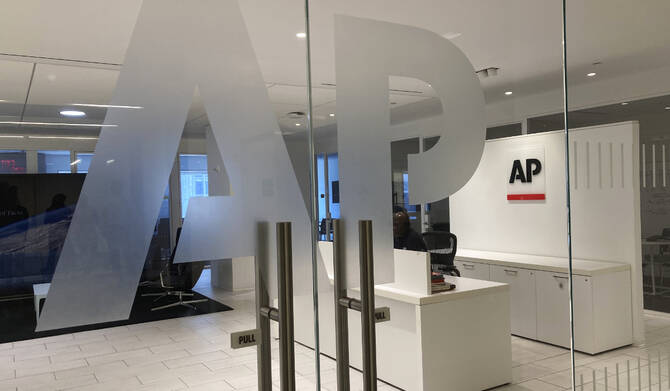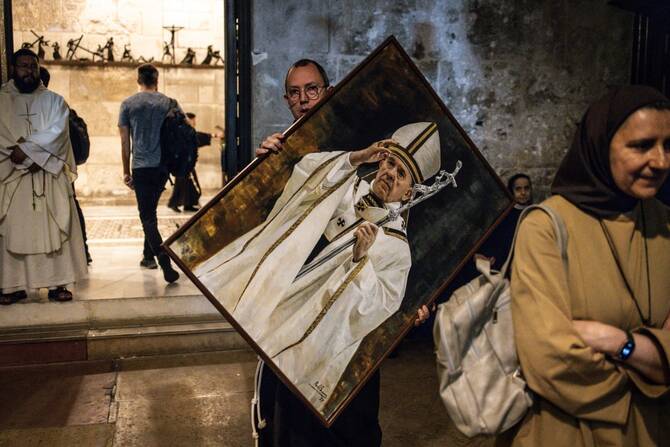
- Since taking office, Trump has waged an aggressive war on the media on several fronts.
- The publication said it would continue to use the name Gulf of Mexico because the body of water has been known for hundreds of years, and noted Trump's decision to rename it the Gulf of America.
WASHINGTON: A federal judge ruled Tuesday that the White House must restore full access to the Associated Press to cover presidential events, ruling in a case that goes to the heart of the First Amendment and affirming that the government cannot punish a news organization for the content of its speech.
U.S. District Judge Trevor N. McFadden, an appointee of President Donald Trump, ruled that the government cannot retaliate against the AP’s decision not to follow Trump’s order to rename the Gulf of Mexico. The ruling handed the AP a major victory at a time when the White House was challenging the press on multiple levels.
“Under the First Amendment, if the government opens doors to some journalists — whether in the Oval Office, the East Room, or elsewhere — it cannot then close those doors to other journalists because of their views,” McFadden wrote. “The Constitution requires no less.”
It is unclear whether the White House will take immediate action to implement McFadden's order. McFadden delayed enforcement of his order for a week, giving the government time to respond or appeal.
Since Feb. 11, the AP has been barred from being part of the small group of journalists covering Trump in the Oval Office or on Air Force One, except for occasional coverage of him at events in the East Room.
The organization had asked McFadden to rule that Trump violated the AP's constitutional right to free speech by taking action because he disagreed with the language his reporters were using. He had previously rejected the AP's request to overturn the changes through an injunction.
Trump came out and explained why he took this step
While there was little debate at the March 27 hearing about why Trump retaliated against the Associated Press (the president himself said so), the administration said it was its own discretion, not White House correspondents or longstanding tradition, to determine who can ask questions of the president and when.
Since the dispute with the Associated Press began, the White House has taken steps to control who covers the president at smaller events and even where reporters sit during press secretary Caroline Leavitt's briefings, saying both rules are meant to better reflect changes in how people get information.
The AP’s decisions about what terminology to use are followed by journalists and other writers around the world through its influential stylebook. The publication said it would continue to use the name “Gulf of Mexico,” because the body of water has been known for hundreds of years, and noted Trump’s decision to rename it the “Gulf of America.” Different outlets took different approaches, with some skirting around it and calling it “the Gulf.”
“For those who think the Associated Press’s lawsuit against President Trump’s White House is about the name of a body of water, think bigger,” Julie Pace, the AP’s executive editor, wrote in an op-ed in the Wall Street Journal. “What it’s really about is whether the government can control what you say.”
Trump called the AP, founded in 1846, a group of “radical left-wing lunatics” and said “we won't let them in until they agree that this is the American Gulf.”
Testimony showed AP's coverage was hampered
For a news organization that relies on speed as a major selling point, the AP invited its top White House correspondent and photographer to testify before McFadden about how his absence from coverage of certain events delayed the transmission of words and images. His lawyer, Charles Tobin, said the AP has already lost a $150,000 advertising contract from a client concerned about the ban.
Government lawyer Brian Hudak demonstrated how the AP was able to use live feeds or photographs from other agencies to spread news, and noted that the AP regularly attends Leavitt's daily briefings.
As a service whose product is distributed to thousands of newspapers, websites and broadcasters across the country and the world, the AP has been part of the small text and photo “pools” that have covered presidents of both parties for decades. The administration has sought to give greater prominence to new — and in many cases Trump-friendly — sources.
In a lawsuit filed Feb. 21, the Associated Press sued Leavitt, White House chief of staff Susie Wiles and deputy chief of staff Taylor Budovich.
Trump has aggressively attacked the media on several fronts since taking office. The Federal Communications Commission has filed lawsuits against ABC, CBS, and NBC News. The administration has tried to defund state-run news services like Voice of America and is threatening public broadcasters PBS and NPR with government funding for what it says are too liberal news coverage.



